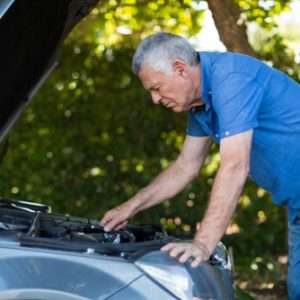So, you’re diving into a serious automotive project? That’s awesome! Whether you’re rebuilding an engine or restoring a classic car, you’re going to need the right tools to make the job easier and safer. Two essential pieces of equipment that often come up are the engine stand and the car rotisserie. But which one is right for your project? Let’s break down the differences and help you decide which tool will be your best friend in the garage. Choosing the right equipment can save you time, money, and a whole lot of backache!
Understanding the Engine Stand
An engine stand is designed to securely hold an engine block while you work on it. It allows you to rotate the engine 360 degrees, giving you easy access to all sides for disassembly, cleaning, and rebuilding. Think of it as a specialized workbench just for your engine.
Benefits of Using an Engine Stand
- Stability: Provides a stable platform for working on heavy engine blocks.
- Accessibility: Allows you to easily rotate the engine to access all sides.
- Safety: Reduces the risk of dropping or damaging the engine.
- Ergonomics: Makes it easier to work on the engine without straining your back.
Pro Tip: When choosing an engine stand, make sure it’s rated for the weight of your engine. Overloading a stand is a recipe for disaster!
Engine stands are relatively inexpensive and easy to set up, making them a great investment for anyone planning to rebuild an engine. They are a must-have for any serious engine rebuild project.
Exploring the Car Rotisserie
A car rotisserie, on the other hand, is a much larger and more complex piece of equipment. It’s designed to hold an entire car body, allowing you to rotate it 360 degrees. This is incredibly useful for rust repair, bodywork, and painting, especially on the undercarriage.
Why Choose a Car Rotisserie?
- Complete Access: Provides full access to the entire car body, including the underside.
- Efficient Rust Repair: Makes it much easier to remove rust and apply rust inhibitors.
- Professional Paint Jobs: Allows for even and consistent paint application.
- Improved Ergonomics: Eliminates the need to crawl under the car, saving your back and knees.
Imagine being able to effortlessly flip your car over to weld in new floor pans or apply undercoating. That’s the power of a car rotisserie! It’s a game-changer for restoration projects.
Interesting Fact: Car rotisseries are often used in professional restoration shops to achieve concours-level finishes.
Things to Consider Before Buying a Car Rotisserie
- Space: Rotisseries require a significant amount of space in your garage.
- Cost: They are considerably more expensive than engine stands.
- Assembly: Assembly can be complex and may require assistance.
- Safety: Proper setup and operation are crucial to prevent accidents.
It’s a significant investment, but the time and effort it saves can be well worth it for large-scale restoration projects. Are you ready to take your restoration to the next level?
Engine Stand vs. Car Rotisserie: Key Differences
Let’s get down to brass tacks. What are the real differences between these two tools?
Purpose and Application
The key difference lies in their purpose. An engine stand is specifically for working on engines, while a car rotisserie is for working on car bodies. One focuses on the heart of the machine, the other on its shell.
Size and Cost
Engine stands are smaller, more portable, and significantly cheaper than car rotisseries. A rotisserie is a major investment and requires dedicated space.
Complexity and Setup
Engine stands are relatively simple to assemble and use. Car rotisseries are more complex and require careful setup to ensure safety and stability. Think of it as building a Lego set versus constructing a small building – both require effort, but one is definitely more involved!
Choosing the Right Tool for Your Project
So, which one should you choose? It really depends on the scope of your project. Ask yourself these questions:
Are you rebuilding an engine?
If the answer is yes, an engine stand is a must-have. It will make your life so much easier!
Are you restoring a car body?
If you’re tackling extensive rust repair, bodywork, or painting, a car rotisserie can be a worthwhile investment. It’s especially helpful for working on the underside of the car.
What’s your budget and available space?
Consider the cost and space requirements of each tool. If you’re on a tight budget or have limited space, an engine stand might be the more practical choice.
Ultimately, the best tool for you depends on your specific needs and circumstances. Consider the scope of your project, your budget, and your available space before making a decision. Happy wrenching!
FAQ: Engine Stands and Car Rotisseries
- Q: Can I use an engine stand for anything other than engines?
A: While technically possible for very small, lightweight items, it’s not recommended. Engine stands are designed for the specific weight and mounting points of engines. - Q: Can I build my own car rotisserie?
A: Yes, there are DIY plans available, but it requires welding skills and a good understanding of structural integrity. Safety should be your top priority. - Q: How much weight can a typical engine stand hold?
A: Most engine stands are rated for between 750 and 1000 pounds. Always check the manufacturer’s specifications before using. - Q: Do I need any special tools to use a car rotisserie?
A: You’ll need basic tools for assembly, as well as potentially a hoist or engine crane to lift the car body onto the rotisserie. - Q: Are there any safety precautions I should take when using a car rotisserie?
A: Absolutely! Ensure the car is properly secured to the rotisserie, use safety stands, and never work under the car while it’s rotating.
Choosing between an engine stand and a car rotisserie depends entirely on the project you’re undertaking. An engine stand is indispensable for engine work, offering stability and accessibility. A car rotisserie is a significant investment that pays off in efficiency and quality for extensive bodywork. Consider your needs, budget, and space to make the right choice. Whatever you decide, remember to prioritize safety and enjoy the process of bringing your automotive vision to life. Good luck with your project!




